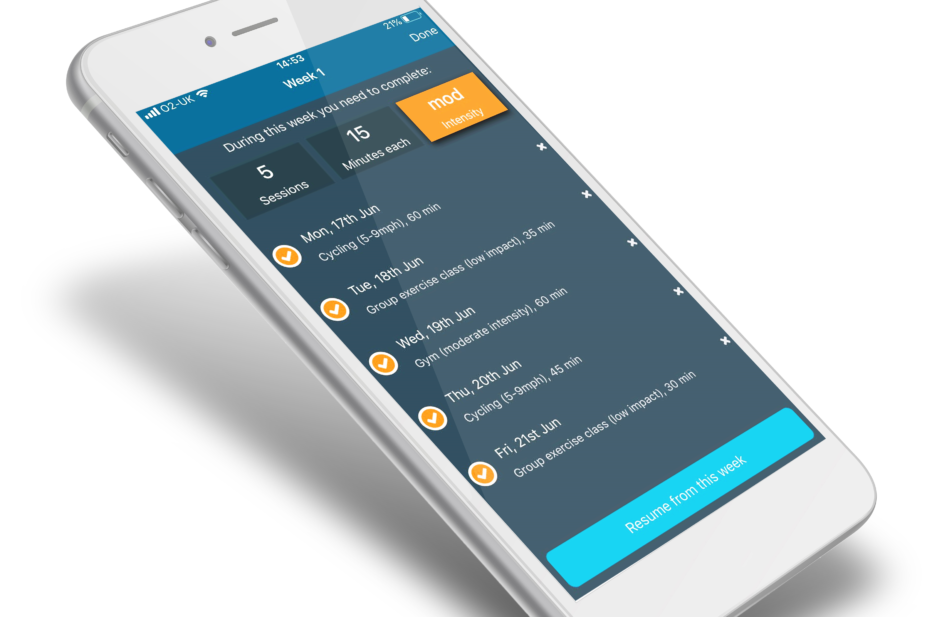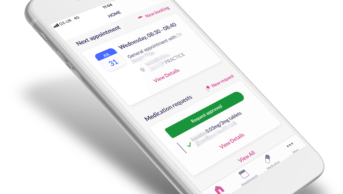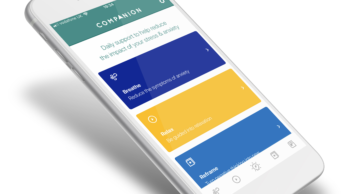
Marketed as “your personal exercise prescription”, ‘iPrescribe Exercise’ — a free app designed by chartered physiotherapists with experience in the NHS, private practice and elite sport — has been developed to encourage users to get active to prevent and manage chronic disease.
There is so much information out there about how frequently we should exercise and and what sort of exercise we should be doing and for how long, which can leave beginners feeling feeling completely overwhelmed. For this reason, it was interesting to find out how iPrescribe Exercise would help someone who wants to start becoming more active but doesn’t know where to start — a place I was in myself just a few years ago.
On opening the app for the first time, iPrescribe carries out a medical screening to identify those who are suitable to begin the exercise programme, as well as any potential issues that may need to be reviewed by a healthcare professional.
The app then asks for simple health information, such as height, weight and resting heart rate, the latter of which you imagine would require a fitness watch or heart rate monitor, but in fact can be measured by simply placing an index finger on the phone’s camera flash.
This is followed by a colour-coded risk profile for cardiovascular and metabolic disease, which suggests the risk parameters to aim between (for example, a range of waist circumferences) to reduce the user’s risk.
The user can then select any 1 of 20 chronic health conditions that affects them, which the app can help to target. It also asks about any medicines that affect heart rate or rhythm.
To provide a benchmark against which progress can be tracked, the app then provides the option to complete a six-minute walking test — a validated medical test that provides information about your starting fitness level.
Finally, the app calculates a personalised 12-week exercise “prescription plan”, which details the number of sessions per week and their recommended length and intensity. For me, this was five 15-minute sessions at moderate intensity, which increased to five 30-minute sessions in week 12.
Once it is set up, the app is easy to use — all you need to do is open it and either track your exercise as you’re doing it (although this is limited to exercises that can be tracked by GPS, such as running), or record a session after you have completed it, alongside your level of exertion. You can also record your heart rate after exercise, but this was something I frequently forgot to do. Reminders to input exercise data each day would be helpful and allow users to make the most of the service.
All exercise data is recorded on a report so you can track progress week by week, and there are also exercise programmes built-in to the app, including walking, running and home aerobics.
For a free app, iPrescribe Exercise provided an impressive amount of information and its initial thorough assessment process made recommendations that seemed realistic and achievable. It is a good option for someone who wants a gradual introduction to exercising and pharmacists could recommend it to people who need guidance in this area, although it is probably not one for the technologically averse.
Bar a pair of trainers, you do not require any equipment or a gym membership, so there is nothing stopping users from getting started straight away.
The app may not be quite so useful for people who are already active, but it may provide reassurance that they are on the right track or to help them improve the action they are already taking.
The iPrescribe Exercise app is available on iPhones at the App Store. Unfortunately the app is not available on Android devices.
iPrescribe Exercise is undergoing an extensive update, and the new version is due out before the end of 2019. The update will include an Android version, more exercise options, an improved user experience, and a connection to Apple Watch, making it easier to record exercise and track heart rate.
References
iPrescribe Exercise. iPrescribe Exercise. 2019. Available at the App Store


